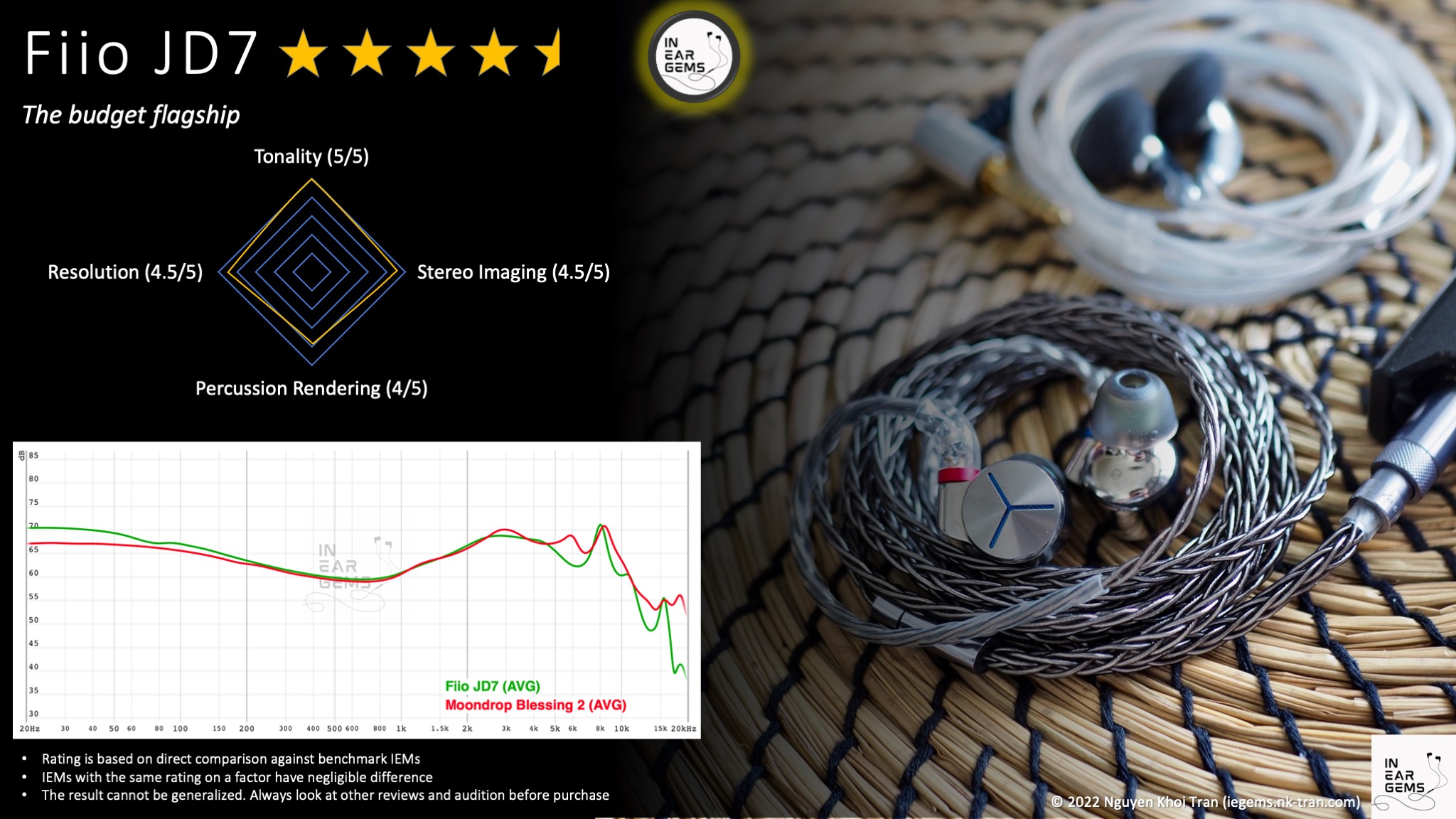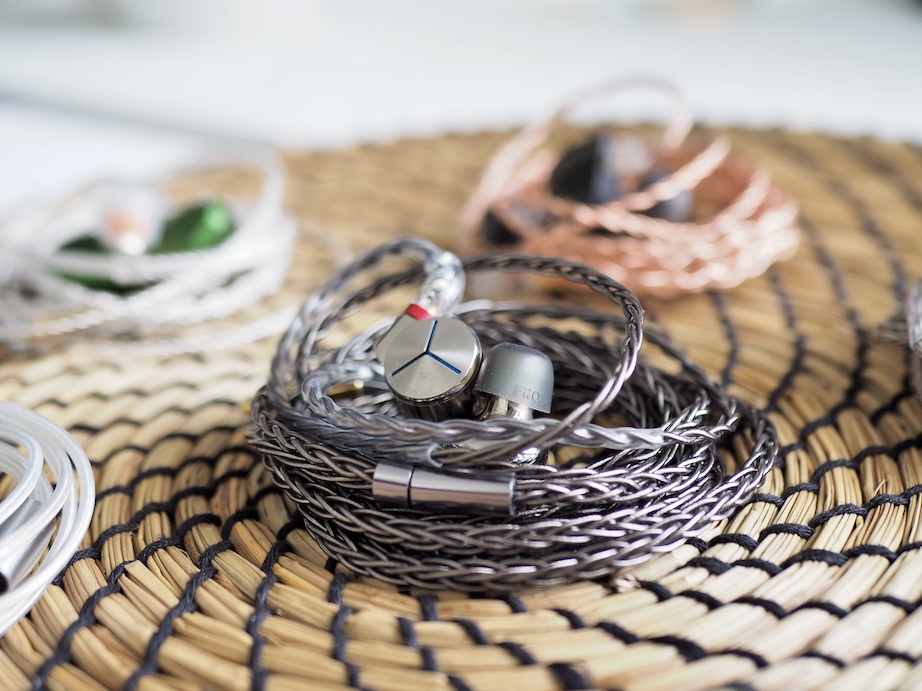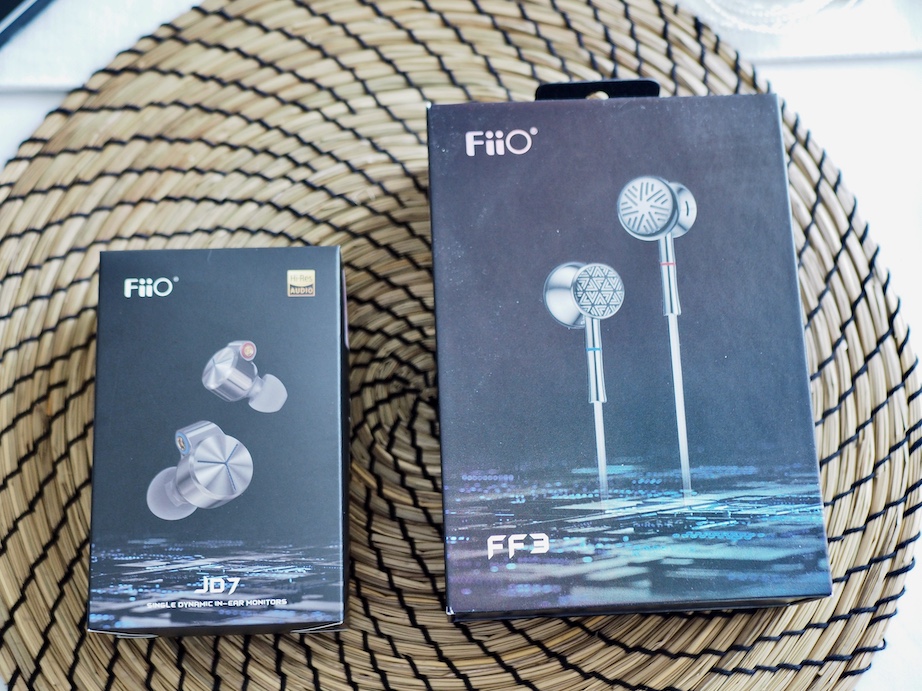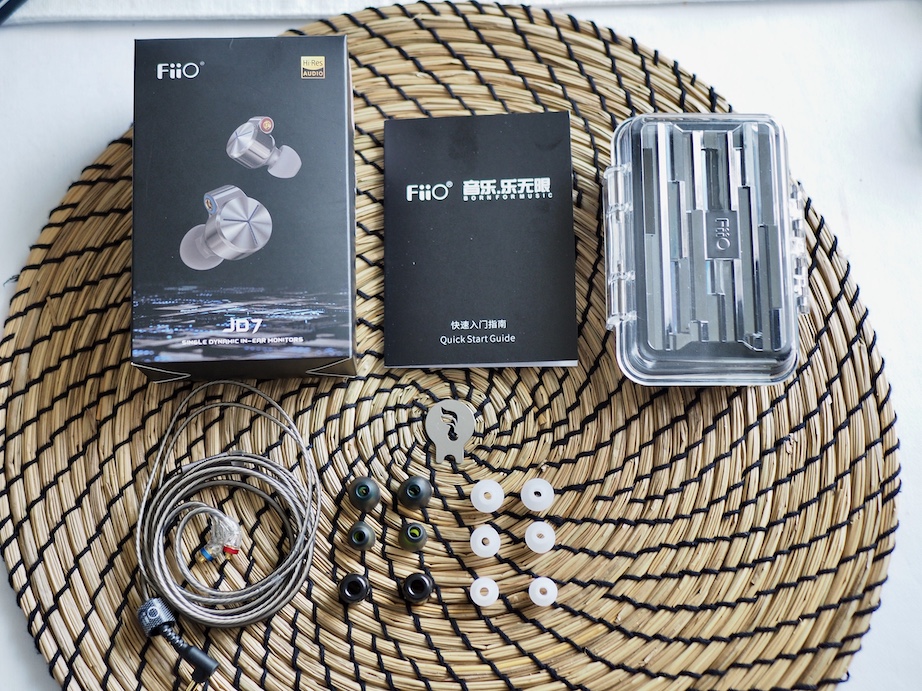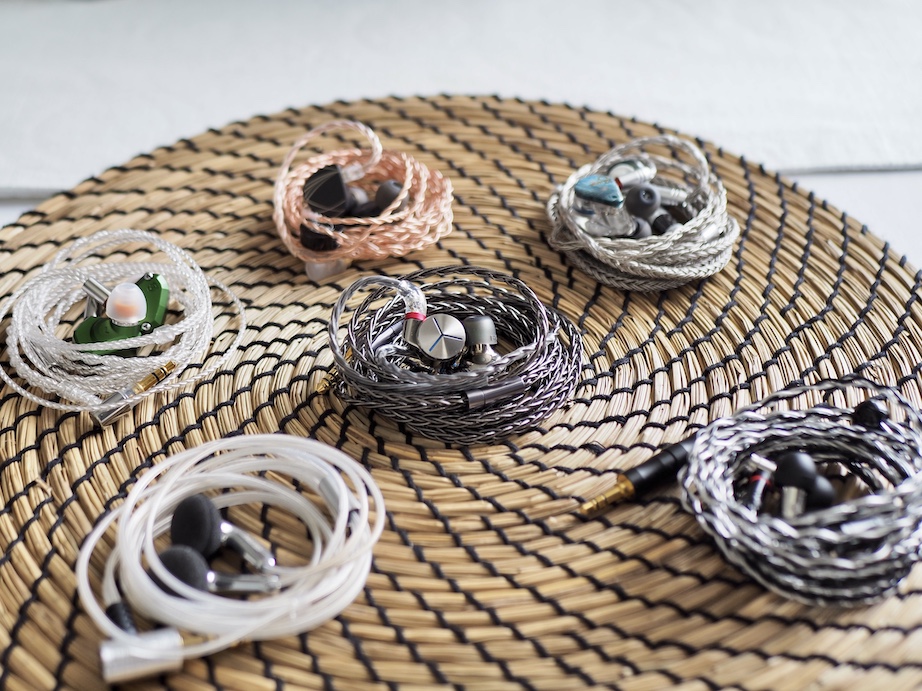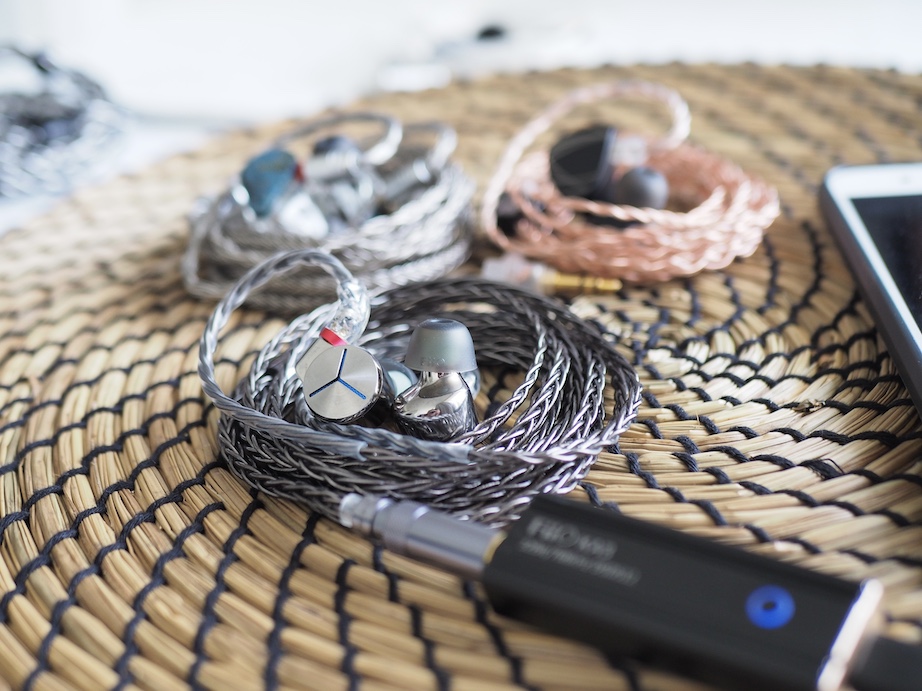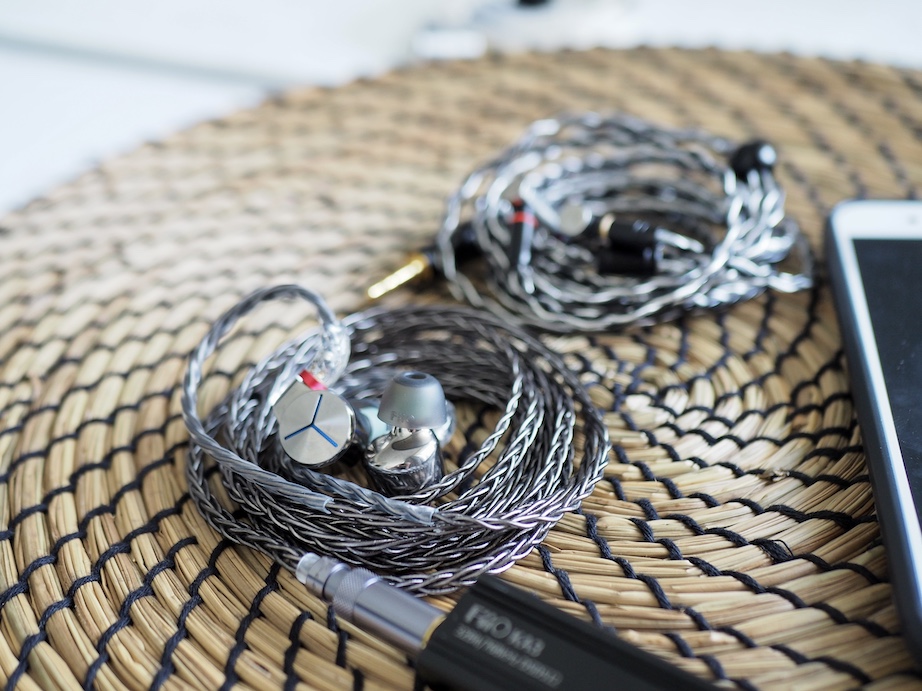Fiio JD7 - The budget flagship
What do you think when you see yet another set of IEM tuned according to Harman In-ear Target?
My first thought is, “what’s the catch?” I have yet to hear a set of Harman-tuned IEMs that does not suffer from a boring flat soundstage or blurry musical notes (a.k.a., “low resolution”). Therefore, when Fiio asked me to review JD7, the flagship of their budget IEM range with a Harman-inspired tuning, I had little expectation.
So, how is JD7? Spoiler: I bought a replacement cable and upgraded my portable DAC/AMP to pair with JD7 after spending a few days with these IEMs.
Forewords
- This review is based on a sample provided by Fiio (Thank you!) I have bought an upgrade cable for JD7 with my own funds.
- You should treat this review as the subjective impressions of an audio geek rather than an “objective truth” about the IEM. Your experience with any IEM would change depending on your DAC/AMP, music library, ear tips, and listening volume.
- I rate IEMs by A/B testing them against a few benchmark IEMs, regardless of price point. This approach ensures the consistency of the ratings in my ranking list. It means that if two IEMs score the same, they perform more or less similar.
- I believe that great IEMs are the ones that can achieve multiple difficult things simultaneously: (1) high resolution (meaning lines of music are crisp, clear, easy to follow and full of texture), (2) 3D soundstage with a strong sense of depth, (3) bold and natural bass with a physical rumble, (4) natural timbre, (5) relaxing and comfortable tonality.
- Ranking list and measurement database can be found on my IEM review blog.
Specs
- Driver: 10mm single dynamic driver (no fancy beryllium, LCP, CNT, or DLC diaphragm here)
- MMCX connector
- Impedance: 32ohm
- Sensitivity: 108dB/mW@1kHz
Non-sound Aspects
Deja vu.
That was my first impression when I saw JD7 because they look exactly like FA7s, another set of Fiio IEMs that I spent too much time reading reviews. Though there is no confirmation from Fiio that JD7 uses the same shells as FA7s, I can tell you that the material, build quality, and finish of JD7 are as good as FD5, FA7s, and FD7.
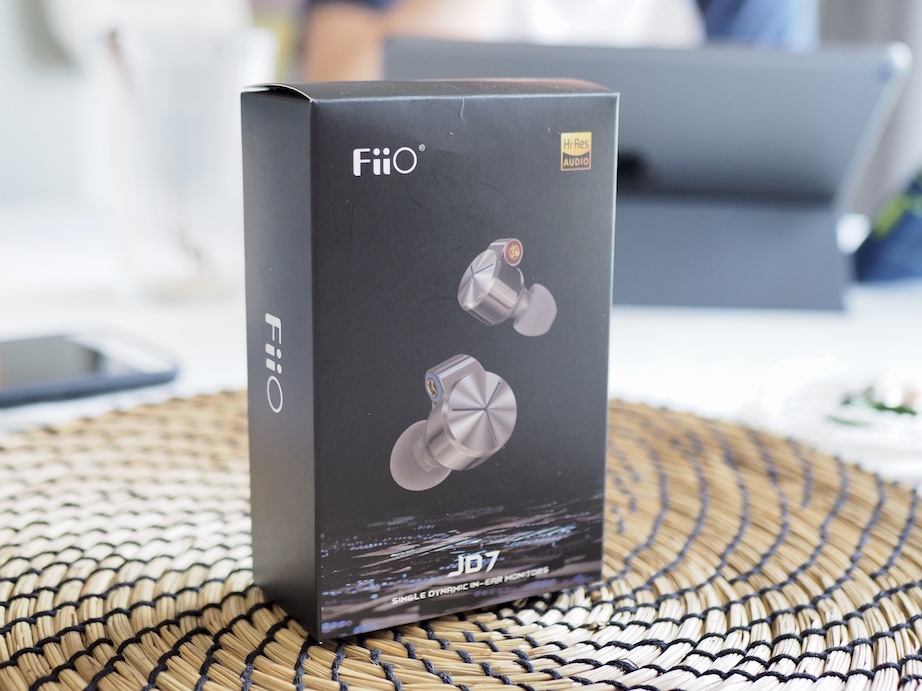
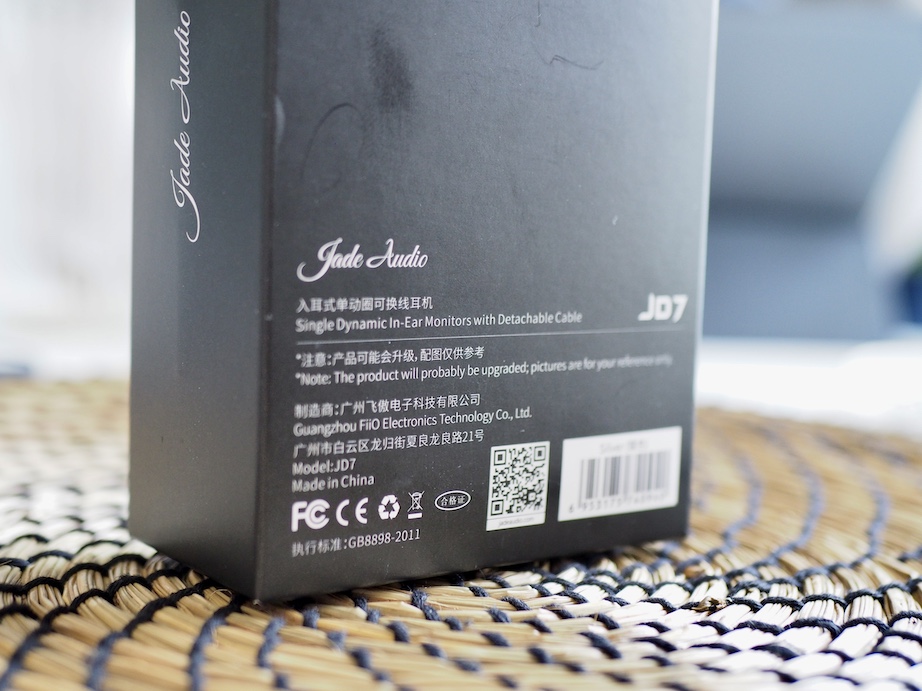
Since JD7 is a budget set, the immediate question would be where the compromise is. Well, the first casualty is the presentation. JD7 comes in a tiny box without any fancy printing or magnetic flaps. To put this in perspective, the box of JD7 is noticeably smaller and less impressive next to the box of FF3, a lower-end model from Fiio’s main product line.
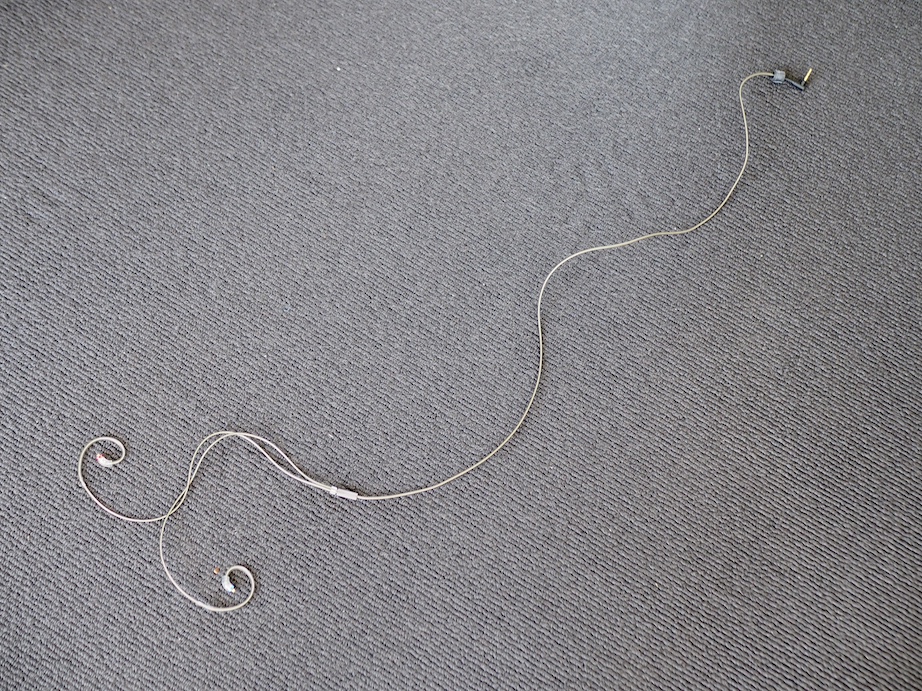
The second casualty is the cable. It’s not horrible, but it is always curly, regardless of how much I try to stretch and straighten it. I think this cable cheapens the look and degrades the joy of using JD7. Therefore, I replaced the cable with a brand-new Fiio LC-RC cable with an interchangeable plug. Interestingly, LC-RC is the stock cable of FA7s. So my JD7 looks identical to FA7s now.
Besides the downgraded presentation and cable, the rest of the packaging of Fiio is excellent. You have the famous Fiio’s pelican case that offers exceptional protection for the IEMs. You have 3 sets of ear tips: balanced, foam, and the newly released HS18. There is also a metal tool for detaching the cable. You will need this because the MMCX connectors of JD7 are pretty stiff.
Notes on the HS18 tips
Some readers recently asked me about HS18 tips, so let’s talk about them. In short, think of them as spin fit tips but without the “spin” part. The silicone part of the tips is very soft and deforms easily, so they are more suitable for shallow rather than deep fit.
When I first used these tips with JD7, I tried to fit the IEMs deeply. However, the ear tips collapsed and broke the seal. After a while, I realised I only needed to press the ear pieces slightly against my ears for the tips to seal ear canals. The isolation is surprisingly good, and there was no pressure within my ear canals. The floating feeling of JD7 with these tips reminds me of flathead earbuds.
Comfort and Isolation
JD7, with the stock HS18 tips, have above-average comfort. The HS18 tips make JD7 feel like floating rather than jammed in my ears. At first, this floating feeling made me think I did not have a good seal. However, the seal was good because all the sub-bass was there, and the noise around me dropped noticeably.
Speaking of noise isolation, JD7 is just about average. I can listen to music on a busy street or bus without increasing the volume. However, the open-back design allows me to hear the traffics and announcements.
How it sounds
Sources for listening tests:
- Topping G5 (for all A/B tests)
- Hidizs XO
- Hidizs S9 Pro
- Fiio KA3
- Shanling UP4
Local FLAC files ripped from CDs or bought from Qobuz were used for most casual listening and A/B tests. My playlist for A/B tests can be found on Apple Music here.
Tonality and Timbre: 5/5 - Excellent
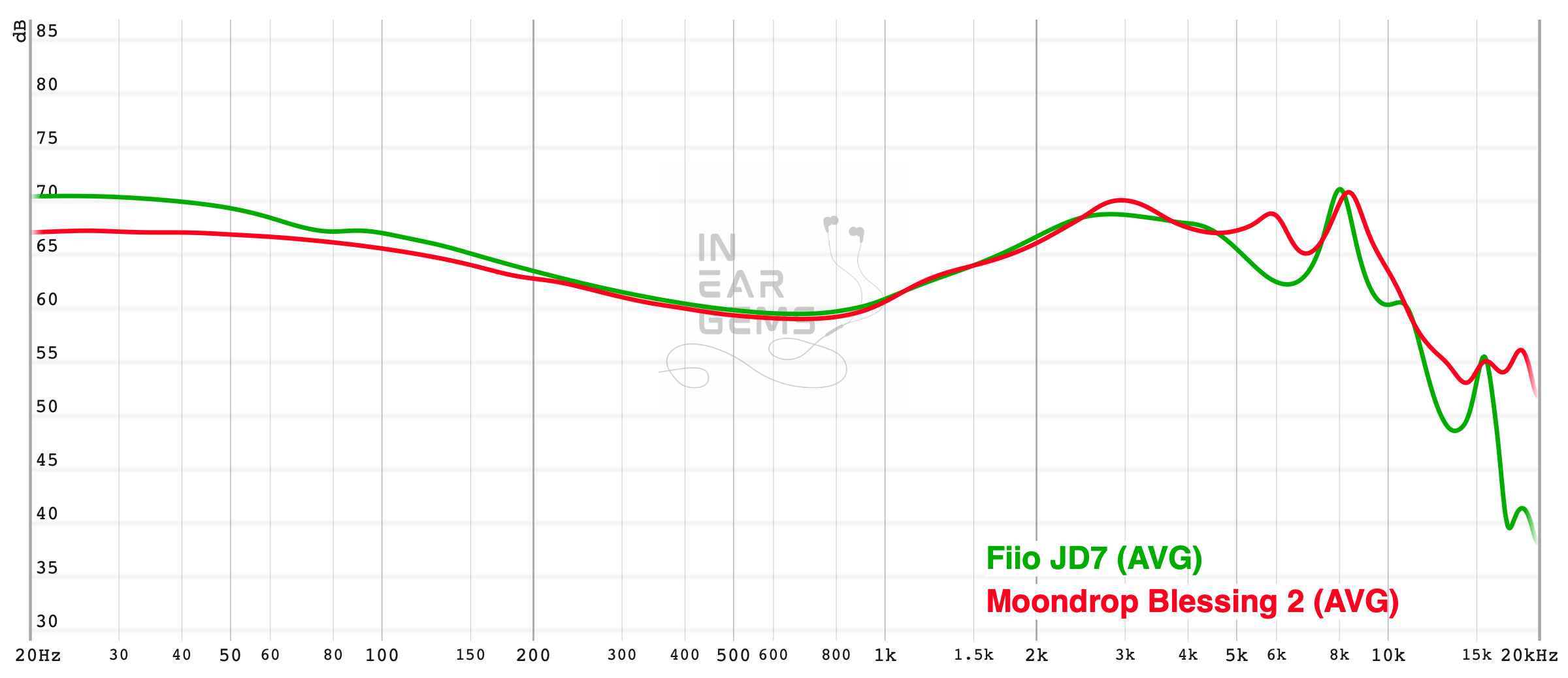
Frequency response of JD7. Measurements were done with an IEC-711-compliant coupler and might only be compared with other measurements from this same coupler. Visit my graph database for more comparisons.
Let me tell you a secret. Unlike my fellow reviewers, who are meticulous about tonality and timbre, I don’t care much about tuning. Why? Because the interpretation of tonal balance and timbre realism is very personal, depending on the listeners’ music library, listening habits, and even experience with real musical instruments. Another issue is that “well-tuned” is no longer a rarity, as manufacturers learn that following the Harman target would keep prominent reviewers (and their fans) happy.
Before we go on, let me just quickly describe the essential traits of a Harman-tuned IEM from my perspective and experience:
- Highlighted or “forward” midrange elements, such as main vocals and instruments. The singers take a couple steps toward you and away from the rest of the band at the back. This effect is caused by boosting of upper midrange frequencies (“ear gain” or “ear compensation”) starting from 1kHz, peaking around 3kHz. Depending on the amount of boosting, the singers might be too loud that they seem to be shouting to your face (a.k.a. “shouty”).
- Detached and deep bass that might not feel very punchy. It means I hear a lot of deep rumbles but not “boom boom”. This effect is caused by the distinct bass shelf starting from 200Hz.
- Thin musical notes, particularly with low-pitched instruments such as cellos and male vocals. This effect is caused by the dip around 250Hz that aims to control the “bass bleed” (boy, I dislike that vaguely defined term).
- Wide but shallow soundstage because the forward midrange pushes the soundstage into your head. Moreover, the subdued low-midrange and midbass prevent the lower frequencies from forming a layer of sound closer to you in front of the midrange.
Fiio JD7 does sound Harman-like, particularly in the placement and clarity of the midrange. However, Fiio has made a few sensible adjustments to make the midrange rich, smooth, clear, and transparent.
Firstly, they fill in the 250Hz dip of the Harman target, giving music notes appropriate weight. As a result, male vocals such as Andrea Bocelli’s in Besame Mucho are rich and emotive, without becoming boomy, an undesirable effect of many bass-boosted IEMs produce. Cellos sound rich and full-bodied with spot-on timbre. For instance, when I listen to the Goldberb Variations arranged for Cello, Violin, and Viola, there was no confusion between three instruments.
Secondly, Fiio flattens the ear gain peak at 3kHz. As a result, the midrange is pulled away from you, like the singer takes just a half step away. This tuning helps avoid the usual shoutiness and gives the stage extra depth.
Finally, Fiio dips the 5-6kHz region about 3dB. This tuning choice surprises me because it is rare and not how Fiio usually tunes their IEMs. Why does dipping 5kHz matter? This region is also known as “presence” because it emphasises note attacks and increases the illusion of clarity. A dip in this region can make musical phrases smoother. For example, when I listen to Bach’s violin sonatas and partitas by James Ehnes, the sounds of the bow catching strings are not boosted to sound like ice-picks. When singers reach high notes, they don’t sound harsh and strident either. As a result, you can turn the volume a couple notches higher than usual, making the bass and treble air pop.
Before we move on, let’s briefly discuss JD7’s bass and treble.
JD7 has the right amount of bass to balance with the midrange and the treble. At no point do I feel like I need to hear more bass. At the same time, I don’t have to constantly adjust the volume between bassy and non-bassy tracks like when I use a bass-boosted IEM.
The theme of balance also carries over to the treble response of JD7. Cymbals, hi-hats, and chimes are not subdued and buried underneath the midrange and bass like some warmer-tuned gear like Fiio FF3. There is a decent amount of treble sparkles. However, the treble is well controlled, evidenced by the fact that cymbal crashes maintain plenty of details rather than becoming a simplistic “clang” sound.
How would I rate the tonality of JD7? 5/5 - Excellent. No, it’s not excellent because it follows the Harman target. It is exceptional because of the tasteful adjustments that make the tonality beautiful and enhance, rather than hinder, the technical performance of the IEMs.
Resolution, Detail, Separation: 4.5/5 - Very Good

Resolution is a fascinating subject due to the difficulty of pinning down what it really is. To me, the resolution is closely tied to how many quiet and minor details you can hear. Of course, if you turn the music louder, you can spot more details. However, you can only turn up the volume if the tuning does not have random peaks that stab your ears and mask minor details around them. Moreover, you can only hear details if the drivers manage to separate them rather than presenting a blob of sound. Earphone DIYers very well recognise this “true resolution” difference between drivers.
So, how is the resolution of JD7?
Nothing to hide.
The smooth and balanced tuning of JD7 allows me to turn up the volume a few extra notches to hear more nuances in the midrange than other IEMs. I never felt that some small information was slightly covered by a louder sound. If something is there in the recording, I’ll be able to hear it. This sense of detail works wonders for both songs and classical recordings. Slight taps of a bow against the body of a violin, the sympathetic resonance of violin strings when James Ehnes hits the right notes, the slight raspiness in Ed Sheeran’s voice in Afterglow. I can hear them all.
It also helps that the no-name drivers inside JD7 are decently resolving. In A/B tests against Moondrop Aria, the benchmark for “average” resolution (3/5), the extra resolution of JD7 is apparent. Aria is noticeably blurrier and less textured. All of the fine details extracted by JD7 are mushed together with Aria.
JD7 is also noticeably more detailed than my Blessing 2, my benchmark for “good” resolution (4/5). The difference in the true resolution of JD7 and Blessing 2 is mostly negligible. However, the slightly edgier tuning of Blessing 2 masks some fine details and forces me to drop the volume. Even when I boost the volume, there is always a sense that some fine details are just slightly masked behind other loud sounds. The grainy treble of Blessing 2 does not help either, as it makes the details of Blessing 2 seem forced and somewhat unnatural.
How does JD7 fare against Andromeda 2020, my benchmark for “excellent” resolution (5/5)? The most noticeable differences in A/B tests are in the upper treble (“air”) region. Room reverb and the trailing end of tones sound softer and mushier with JD7 than with Andromeda. The midrange resolution of JD7 is uncomfortably close to Andromeda, however. Perhaps it is time for me to find an even more technically proficient IEM to replace Andromeda as the 5/5 benchmark?
So, how would I rate JD7’s resolution? Whilst the true resolution of JD7 is within the ballpark with the Blessing 2 (4/5), the tuning of JD7 makes it easier to appreciate what JD7 can resolve. On the other hand, there is still a deeper layer of details that I can hear on more resolving IEMs like Andromeda, IE900, and Monarch Mk2 that JD7 cannot uncover. Therefore, I rate JD7’s resolution 4.5/5 - Very Good.
Percussion Rendering: 4/5 - Good
Percussion rendering reflects how well the tuning and technical performance of an IEM work together to recreate realistic sound of a drum set. Good drum hits have a crisp attack (controlled by frequencies from 4kHz to 6kHz), full body (midbass frequencies around 200Hz), and physical sensation (sub-bass frequencies around 50Hz). Good technical performance (“fast” driver) ensures that bass notes can be loud yet detailed. IEMs that cannot control bass very well tend to reduce the bass’ loudness to prevent muddiness.
There is little to talk about JD7’s percussion rendering, unlike its tuning and resolution. It is simply good. A correct amount of midbass punch (“boom boom”) makes drums punchy and satisfying. Luckily, the bass punches are supported by a physical sensation and rumble, unlike my Fiio FD5. As a result, war drums in epic video game soundtracks sound satisfying with JD7. Electronic bass in G.O.A.T. also hits hard with authority.
In A/B tests against the Moondrop Aria (3/5) and Blessing 2 (4/5), it’s clear that JD7 does not suffer from the same slightly soft and pillowy bass attacks. JD7 also renders the melody of pitches of the bass line rather than simply the “thump thump” sounds. However, due to the way Blessing 2 fits, I hear a deeper bass extension with Blessing 2 compared to JD7.
My biggest complaint about JD7’s percussion render is that it is still a bit soft. JD7’s bass is not mushy, but it lacks the crisp, snappy, and “tight” attacks that I hear from top performers like Dunu Zen Pro, IE900, and FD7.
So how would I rate JD7 bass? 4/5 - Good.
Stereo Imaging (Soundstage): 4.5/5 - Very Good
Stereo imaging or “soundstage” is a psychoacoustic illusion that different recording elements appear at various locations inside and around your head. Your brain creates based on the cues such as the loudness and phase differences between the left and right channels. Most IEMs do not differ significantly, nor can they compete with headphones or loudspeakers. However, some IEMs offer a more spacious soundstage than others. Best IEMs can create multiple layers of sound from closer to further away and make some instruments float slightly above your head.

Open with a palpable sense of depth.
The soundstage rendering of JD7 is also a surprise to me because, simply put, IEMs and headphones with Harman-inspired tuning rarely produce good soundstage. Width? Yes, the stage of Sennheiser HD560s or Moondrop Blessing 2 can extend wide to the side, reaching my shoulders. However, the soundstage of these headphones and IEMs is shallow. When sound elements appear in the middle of the stage, there is little sense of layering from closer to further away.
JD7, on the other hand, can convey a 3D soundstage image. The lead singer stands at the centre of the stage, either inside my head or slightly before my forehead. The band would take several steps further away from me, leaving some space between the vocal and the instruments. The backing vocals appear on the sides, hovering over my shoulder or right next to my ears.
With more interesting albums such as The ultimate Guitar Collection by John Williams, JD7 shows off the ability to reproduce diverse shapes of the soundstage. JD7 makes me feel like I am inside the guitar in some tracks. In other tracks, I feel like I am sitting in front of two guitars. In some tracks, I can even hear a guitar from the left side of the stage that seems to come from a different room. With some electronic tracks, I can even hear sound popping up from slightly above my ears.
Looking at the back of JD7’s earpieces, you will notice three vents. Similarly to other semi-open-back IEMs from the FD series of Fiio, JD7 mimics the openness and airy feeling of open-back headphones and flathead earbuds decently. There is no sonic wall nor the physically stuffy feeling that some sealed IEMs can create.
Is there anything I don’t like about the soundstage imaging of JD7? Two things, actually. Firstly, JD7 lacks tuning tricks to push the whole soundstage away from you to mimic the experience of listening to desktop speakers that some high-end IEMs can achieve. Secondly, JD7 lacks the pin-point imaging of high-end IEMs. As a result, the soundstage image painted by JD7 is a bit more diffused and less impressive than, say, the Andromeda.
How would I rate JD7’s soundstage imaging? 4.5/5 - Very Good. It’s open and airy, with a neat illusion of depth and height. Thoroughly enjoyable rather than “it’s alright.”
Source Pairing
JD7 is very easy to drive. You can extract the performance level I described above from JD7 with any decent DAC/AMP combos, including the humble Apple dongle. This characteristic is excellent because it allows me to use my AP80 Pro X music player, which is a bit underpowered.
Despite being easy to drive, JD7 is very sensitive to the characteristics of the sources. For example, you can hear a noticeable shift in tonality when using a warmer Shanling source. The only pairing that I don’t recommend is with Fiio KA3. Something about the treble presentation of that dongle makes the soundstage of JD7 flat and lifeless.
Conclusion
Every IEM collection should have an all-rounder who does everything at a high level. Despite my little expectation for yet another Harman-tuned IEM, JD7 challenged many of my prenotions. It earned the spot of the all-rounder in my collection. My final conclusion about JD7? Seal of approval and recommendation without reservation.
Pros:
- Smooth tuning with excellent balance between bass, mid, and treble
- Realistic and enjoyable timbre
- Very good midrange tonality, transparency, and detail
- Open, airy, and 3D soundstage imaging
- Good percussion rendering
- Easy to drive
Cons:
- The stock cable cheapens the look and usability of the set
- No standout feature or characteristics
